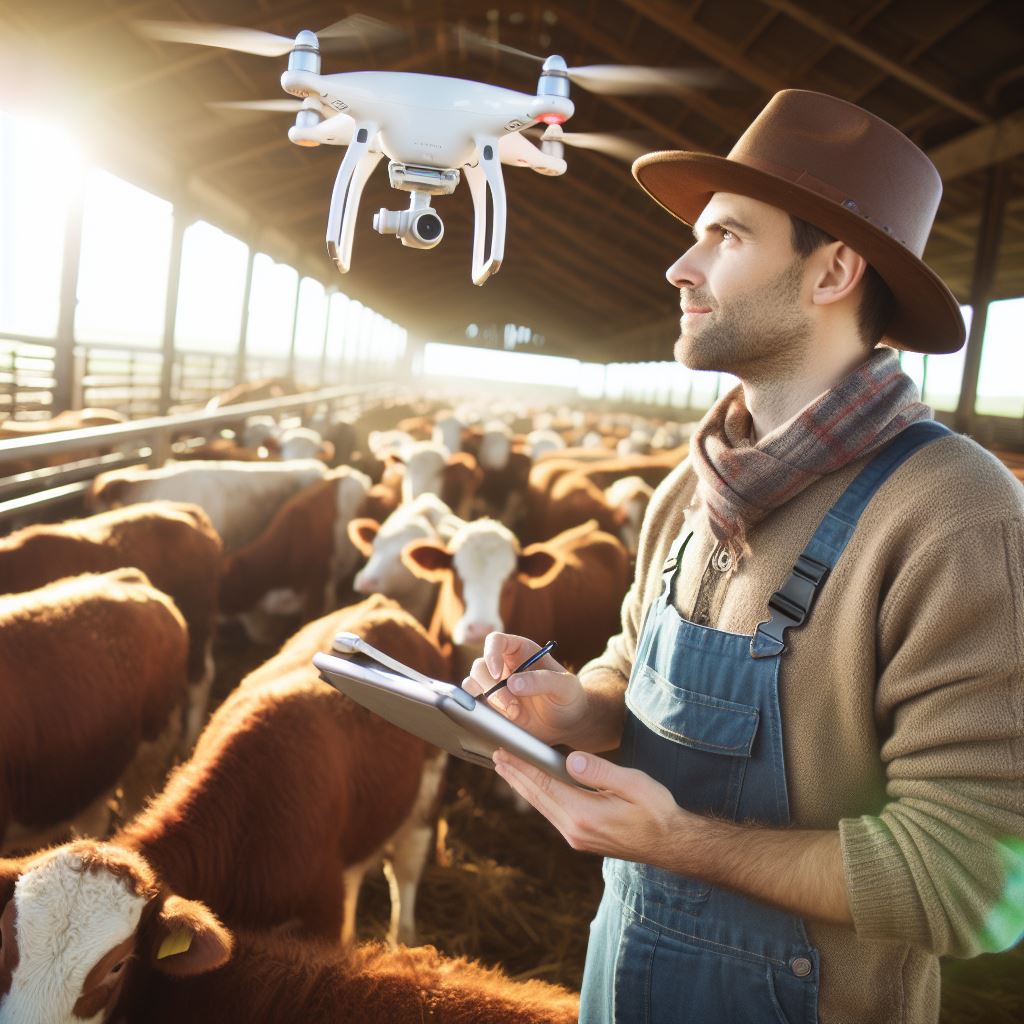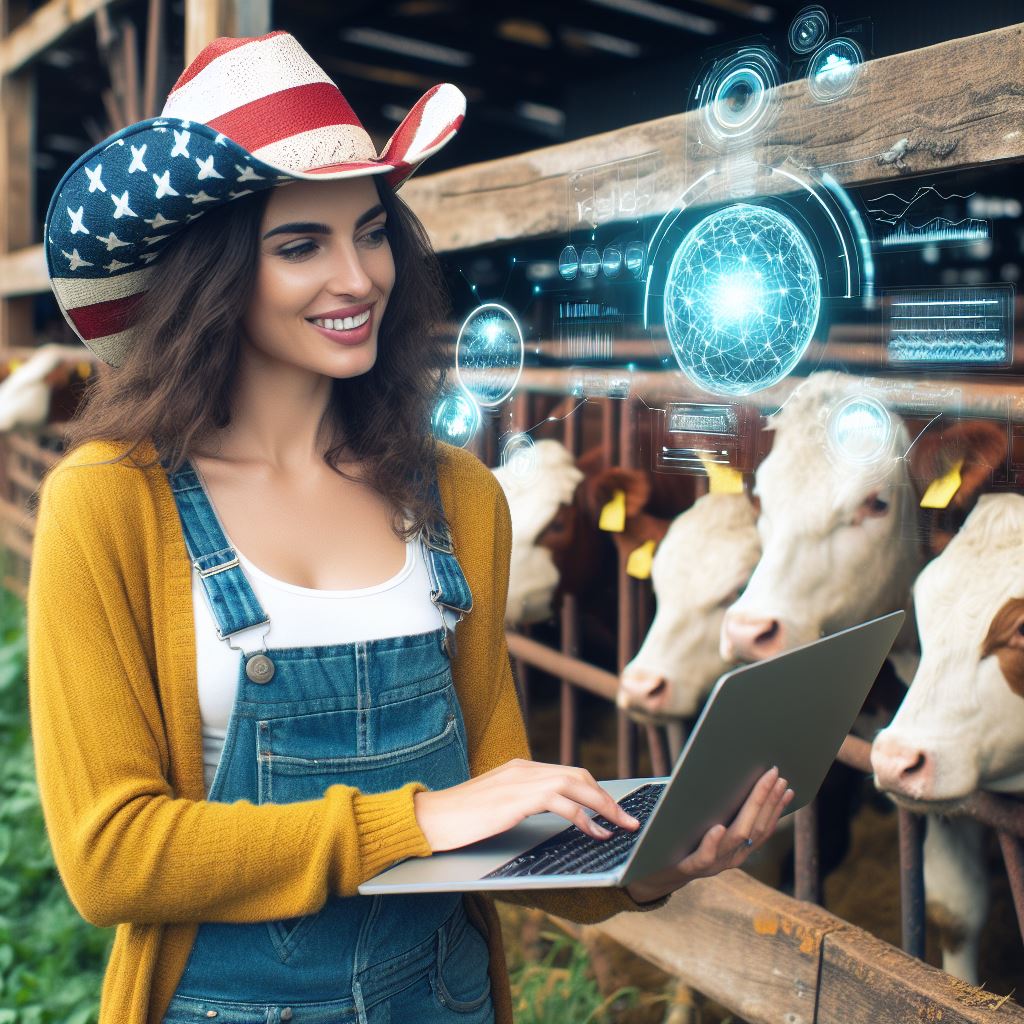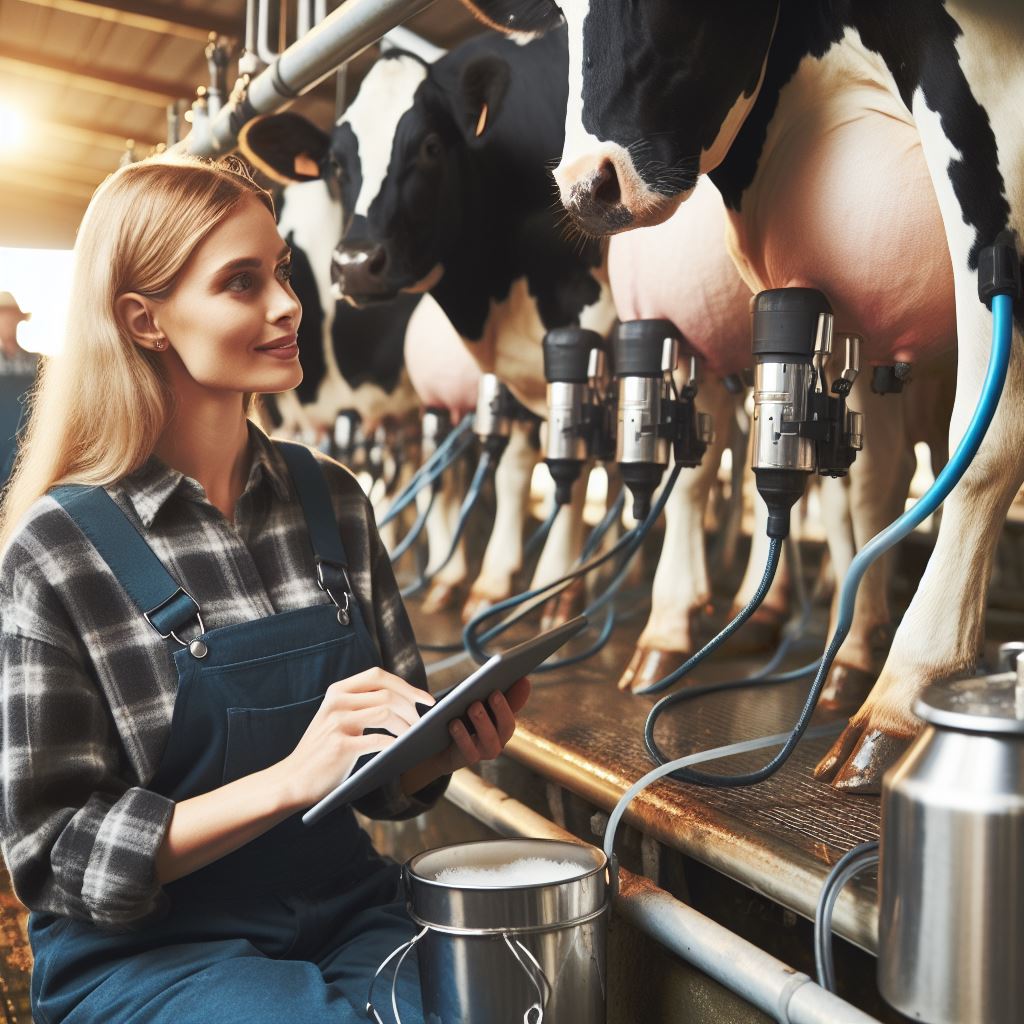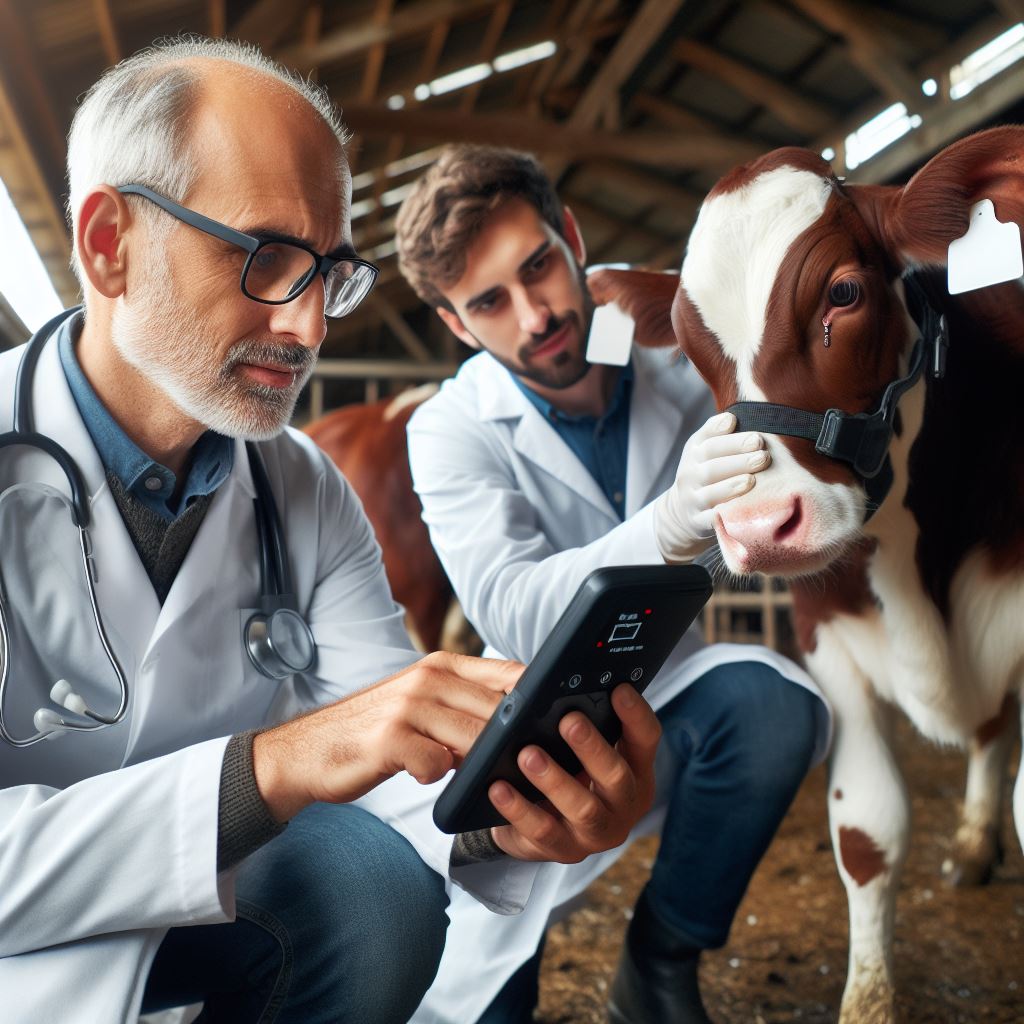Introduction
Brief explanation of futuristic barns
Revolutionizing traditional farming practices, futuristic barns embrace cutting-edge technology, innovative designs, and Automated Feeding Systems to usher in a new era of agricultural efficiency.
These advanced structures are equipped with automated feeding systems that streamline the feeding process, ensuring optimal nutrition for animals while reducing manual labor.
Overview of automated feeding systems
Automated feeding systems in futuristic barns offer a comprehensive solution for precise and efficient feeding.
These systems employ digital sensors and software algorithms to monitor and control the precise amount of feed each animal receives.
Integration with smart devices allows farmers to remotely manage and monitor the feeding process, ensuring timely and accurate adjustments.
Importance of automated feeding systems in modern agriculture
The importance of automated feeding systems in modern agriculture cannot be overstated.
These systems minimize feed wastage, as they deliver the right amount of feed to each animal, eliminating overfeeding and spillage. This reduction in feed waste consequently reduces costs and environmental impact.
Moreover, automated feeding systems promote animal welfare by providing a stress-free feeding environment.
These systems ensure consistency and accessibility to feed, reducing competition and aggression among animals.
Additionally, they allow for personalized diets, catering to specific nutritional requirements of individual animals, ensuring their well-being and health.
Basically, futuristic barns with automated feeding systems are transforming the agricultural landscape.
These innovative structures and technologies enable precise and efficient feeding, enhancing productivity and animal welfare.
As modern agriculture continues to evolve, the integration of automated feeding systems will play a crucial role in meeting the demands of sustainable and efficient farming practices.
Benefits of Automated Feeding Systems
Increased efficiency and productivity
- Automated feeding systems can greatly improve the efficiency of feeding routines.
- These systems ensure that feed is delivered accurately and consistently at the right quantities.
- By automating the process, it eliminates the need for manual feeding, saving time and reducing human error.
- With automated systems, farmers can feed their livestock more frequently, leading to improved productivity.
Cost savings on labor and feed
- Manual feeding requires significant labor hours, especially when dealing with large herds.
- Automated feeding systems help reduce labor costs as they require minimal human intervention.
- By precisely measuring and distributing feed, these systems minimize feed waste, resulting in cost savings.
- Farmers can also save money on labor costs, as fewer workers are needed to handle feeding duties.
Improved animal welfare
- Automated feeding systems promote better animal welfare by providing consistent access to feed.
- Animals have access to feed at all times, ensuring they receive a sufficient and regular supply.
- As these systems are programmable, they can cater to individual animal feeding needs, improving overall health.
- Animals can consume feed at their own pace, reducing stress and promoting natural feeding behavior.
Enhanced data collection and analysis
- Automated feeding systems have sensors and software that collect valuable data in real-time.
- Farmers can monitor feed intake, feeding patterns, and other metrics to make informed management decisions.
- With accurate data collection, farmers can identify any irregularities or health issues promptly.
- Analyzing the data collected by these systems can help optimize feed rations and improve farm management strategies.
Essentially, the benefits of these systems in futuristic barns are numerous and significant.
These systems increase efficiency and productivity by delivering feed accurately and consistently.
Transform Your Agribusiness
Unlock your farm's potential with expert advice tailored to your needs. Get actionable steps that drive real results.
Get StartedThey also provide cost savings on both labor and feed, while simultaneously improving animal welfare.
Additionally, these systems offer enhanced data collection and analysis capabilities, allowing for better farm management.
As technology progresses, the integration of automated feeding systems in barns will continue to revolutionize the agricultural industry.
Read: Barns and Bonds: Community Farming
Types of Automated Feeding Systems
Gravity-based systems
- Description of how gravity-based systems work: Gravity-based systems utilize the force of gravity to distribute feed to animals in a barn. By placing feeders at an elevated height, the feed naturally flows downwards, allowing animals to access it easily.
- Advantages and disadvantages: One advantage of gravity-based systems is their simplicity, as they require minimal technology and maintenance. However, they may not be suitable for larger barns or farms with a complex layout.
- Additionally, controlling the amount of feed distributed can be challenging, leading to potential over or underfeeding.
Conveyor systems
- Description of how conveyor systems work: Conveyor systems use mechanical belts or chains to transport feed from a central storage unit to various feeding points. These systems provide continuous feed delivery and can be programmed to distribute specific quantities.
- Advantages and disadvantages: Conveyor systems offer precise control over feed distribution, ensuring animals receive the correct amount. They are efficient for large-scale production and can be easily automated.
- However, these systems require regular maintenance to prevent belt or chain malfunctions, which can disrupt the feeding process.
Robotic systems
- Description of how robotic systems work: Robotic systems utilize advanced technology, such as sensors and cameras, to autonomously deliver feed to animals. They can navigate through the barn, identify individual animals, and dispense personalized portions of feed.
- Advantages and disadvantages: Robotic systems provide accurate portion control, minimizing feed wastage and ensuring each animal receives appropriate nutrition. They also reduce labor requirements and allow for data collection on feeding patterns.
- However, these systems are expensive to install and maintain, and technical malfunctions can interrupt the feeding process.
In general, the choice of which automated feeding system to use depends on various factors, including the size of the barn, the number of animals, and the desired level of control.
Gravity-based systems are simple and cost-effective but may not be suitable for large-scale farms.
Conveyor systems offer precise distribution but require regular maintenance.
Robotic systems provide individualized feeding and data collection capabilities, but they come with a higher upfront cost.
As technology continues to advance, new types of automated feeding systems may emerge, offering even greater efficiency and control.
Farmers should carefully evaluate their specific needs and consider the advantages and disadvantages of each system before making a decision.
Ultimately, the goal of these futuristic barns and automated feeding systems is to optimize animal welfare and improve overall farm productivity.
Read: Effective Pig Housing Solutions
Examples of Futuristic Barns with Automated Feeding Systems
As technology continues to revolutionize various industries, agriculture has not been left behind.
The advent of futuristic barns, equipped with these systems, has transformed the way farmers manage their livestock and crops.
In this section, we will explore and delve into three prime examples of such barns and their innovative feeding solutions.
Smart barns equipped with cutting-edge technology
Smart barns represent the pinnacle of technological advancements in agriculture.
These state-of-the-art structures incorporate a range of cutting-edge features, including sensors, cameras, and monitoring systems.
The sensors are strategically placed throughout the barn to monitor various conditions such as temperature, humidity, and even the health of individual animals.
In conjunction with the cameras, these smart barns allow farmers to remotely track and observe their livestock in real-time.
This enhances both animal welfare and overall management efficiency.
Moreover, the monitoring systems analyze the data collected, providing valuable insights into feeding patterns, animal behavior, and health.
This, in turn, enables farmers to make informed decisions regarding their feeding strategies and overall livestock management.
Automation plays a vital role in these smart barns, specifically in the feeding process. Instead of manually distributing feed, automated feeding systems are employed.
These systems are designed to accurately dispense the required amount of feed at specific intervals.
Showcase Your Farming Business
Publish your professional farming services profile on our blog for a one-time fee of $200 and reach a dedicated audience of farmers and agribusiness owners.
Publish Your ProfileThe automation not only saves farmers valuable time and labor but also ensures each animal receives the necessary nutrients consistently.
Vertical farming facilities
Vertical farming has gained significant traction in recent years, particularly in urban areas where space is limited.
These facilities utilize these systems to overcome the challenges associated with vertical farming.
By incorporating automation, vertical farms achieve increased precision and control over their feeding practices.
The automated feeding systems in vertical farming setups are designed to cater to the specific requirements of each plant.
By precisely delivering nutrients at optimal levels, the systems promote healthy growth and maximize crop yields.
Additionally, these systems can be fine-tuned to account for variations in the plant’s growth stages, resulting in a customized feeding approach for each crop.
Furthermore, the automation in vertical farming facilities allows for efficient resource utilization.
By precisely delivering nutrients directly to the plant roots, wastage is minimized, and water management is optimized.
This makes vertical farms environmentally sustainable and economically viable alternatives for traditional farming methods.
Hydroponic and aquaponic farms
Hydroponic and aquaponic farms, known for their soilless farming methods, have also embraced these systems.
These systems seamlessly integrate into the nutrient delivery and water management processes, enhancing efficiency and overall productivity.
With automated feeding systems, hydroponic farms can precisely control the nutrient levels provided to the plants.
By monitoring and adjusting the nutrient solution composition, the systems ensure each plant receives the ideal mixture tailored to its specific needs.
This precision minimizes wastage while maximizing the plants’ growth potential.
Aquaponic farms, on the other hand, combine fish farming with hydroponics to create a symbiotic ecosystem.
Automated feeding systems play a crucial role in maintaining this delicate balance.
By monitoring and regulating the feed given to the fish, the systems optimize nutrient delivery to the plants.
This integration results in a sustainable farming method that conserves water and reduces waste.
In essence, the emergence of futuristic barns equipped with automated feeding systems has revolutionized agricultural practices.
The examples outlined in this section demonstrate the diverse applications of this technology, from smart barns with advanced sensors and monitoring systems to vertical and soilless farming facilities.
As automation continues to evolve, farmers can expect even greater efficiency and productivity, ultimately shaping the future of agriculture.
Read: Eco-Friendly Livestock Equipment: What’s New?
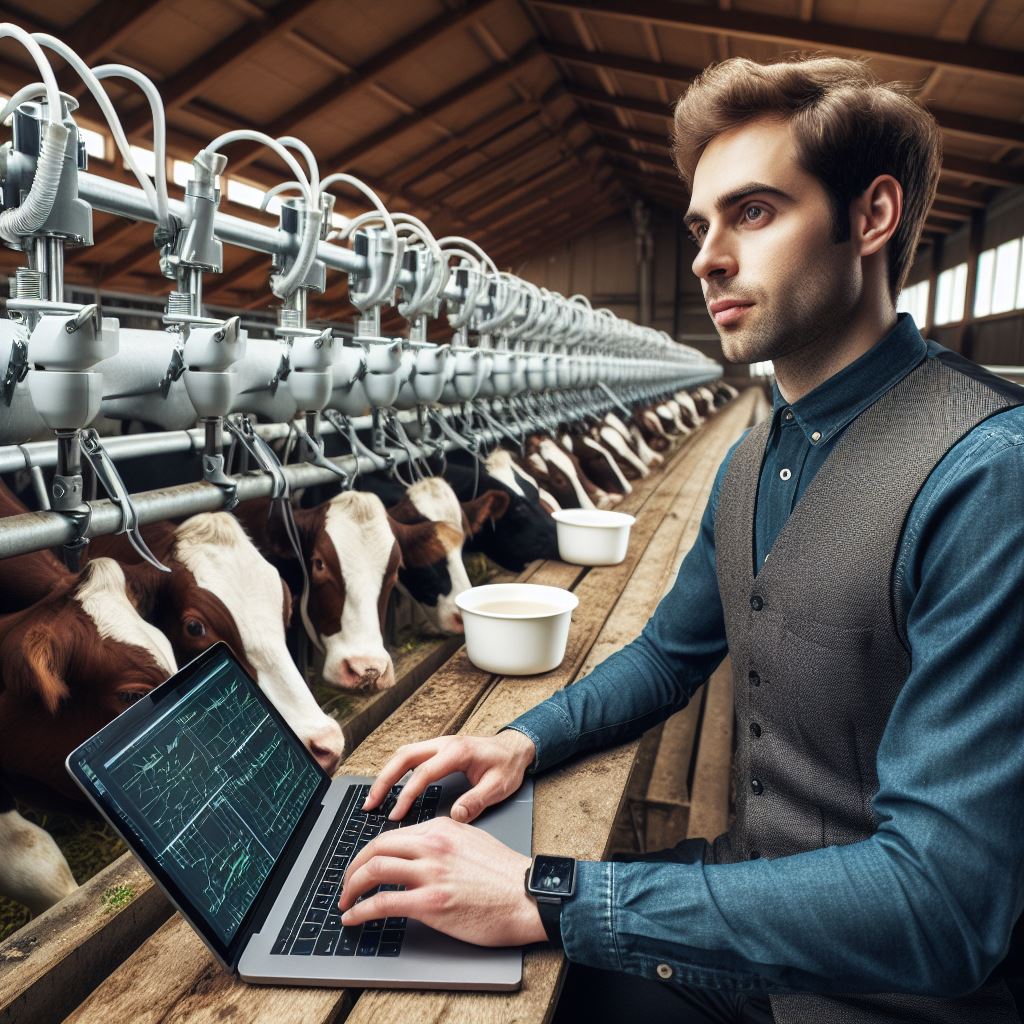
Delve into the Subject: AI in Agriculture: A 2024 Overview
Challenges and Considerations
Initial investment costs
- Setting up automated feeding systems in barns can involve significant initial expenses.
- The cost includes purchasing and installing the necessary equipment and infrastructure.
- Farmers must carefully evaluate their budget and consider the long-term benefits before making this investment.
Maintenance and technical support requirements
- Automated feeding systems require regular maintenance to ensure optimal performance.
- Farmers need to allocate sufficient resources for servicing and repairs.
- Technical support from manufacturers or specialists may be necessary to address any technical issues.
Compatibility with existing infrastructure and livestock management practices
- Farmers should assess if their current barn infrastructure can accommodate automated feeding systems.
- Modifications or upgrades to the barn may be required to ensure compatibility.
- Consideration should also be given to how these systems fit with existing livestock management practices.
Challenges of Integrating automated feeding systems into barns
Integrating these systems into barns presents several challenges and considerations that farmers need to address.
The initial investment costs can be a significant barrier for many farmers.
Purchasing and installing the necessary equipment and infrastructure can be costly.
Farmers must carefully evaluate their budget and determine if the long-term benefits outweigh the expenses.
Moreover, regular maintenance is essential to ensure the efficient functioning of automated feeding systems.
Farmers need to allocate the necessary resources for servicing and repairs.
Technical support from manufacturers or specialists may be required to address any technical issues that may arise.
Compatibility with existing barn infrastructure and livestock management practices is crucial for successful integration.
Farmers should evaluate if their current barns can accommodate automated feeding systems.
Modifications or upgrades to the barn might be necessary to ensure compatibility.
Additionally, adapting automated feeding systems to existing livestock management practices is critical.
Farmers should consider how the automated systems fit within their established routines and procedures.
Addressing these challenges and considering these factors will lead to a more successful implementation of futuristic barns with automated feeding systems.
It is essential for farmers to carefully plan, budget, and seek necessary technical expertise when venturing into this advanced agricultural practice.
By addressing initial investment costs, maintenance and technical support requirements, as well as compatibility concerns, farmers can enhance efficiency and productivity in their barns.
Read: Livestock Management: Diverse Animal Care
Showcase Your Farming Business
Publish your professional farming services profile on our blog for a one-time fee of $200 and reach a dedicated audience of farmers and agribusiness owners.
Publish Your ProfileFuture Prospects and Conclusion
Potential advancements in automated feeding systems
As technology continues to evolve, the future holds exciting possibilities for these systems.
Advancements such as improved sensors and devices can enhance the accuracy and efficiency of feeding processes.
Integration of artificial intelligence and machine learning
With the integration of artificial intelligence and machine learning, these systems can become even more intelligent and responsive.
These technologies enable the systems to analyze data and make informed decisions to optimize feeding strategies.
The role of automated feeding systems in sustainable agriculture
Automated feeding systems have the potential to play a crucial role in sustainable agriculture.
By minimizing waste, reducing resource consumption, and optimizing productivity, these systems contribute to a more environmentally friendly and efficient farming practice.
Recap of main points and closing thoughts
In a nutshell, futuristic barns with automated feeding systems offer various benefits.
The potential advancements in technology, the integration of artificial intelligence, and the role in sustainable agriculture highlight the promising future prospects of these systems.
With further research and development, automated feeding systems can revolutionize the way we feed animals and contribute to a more sustainable and efficient farming industry.
Overall, the evolution of automated feeding systems presents an exciting opportunity for the future of agriculture.
By embracing these advancements and harnessing their potential, we can create a more sustainable and productive farming industry for generations to come.

